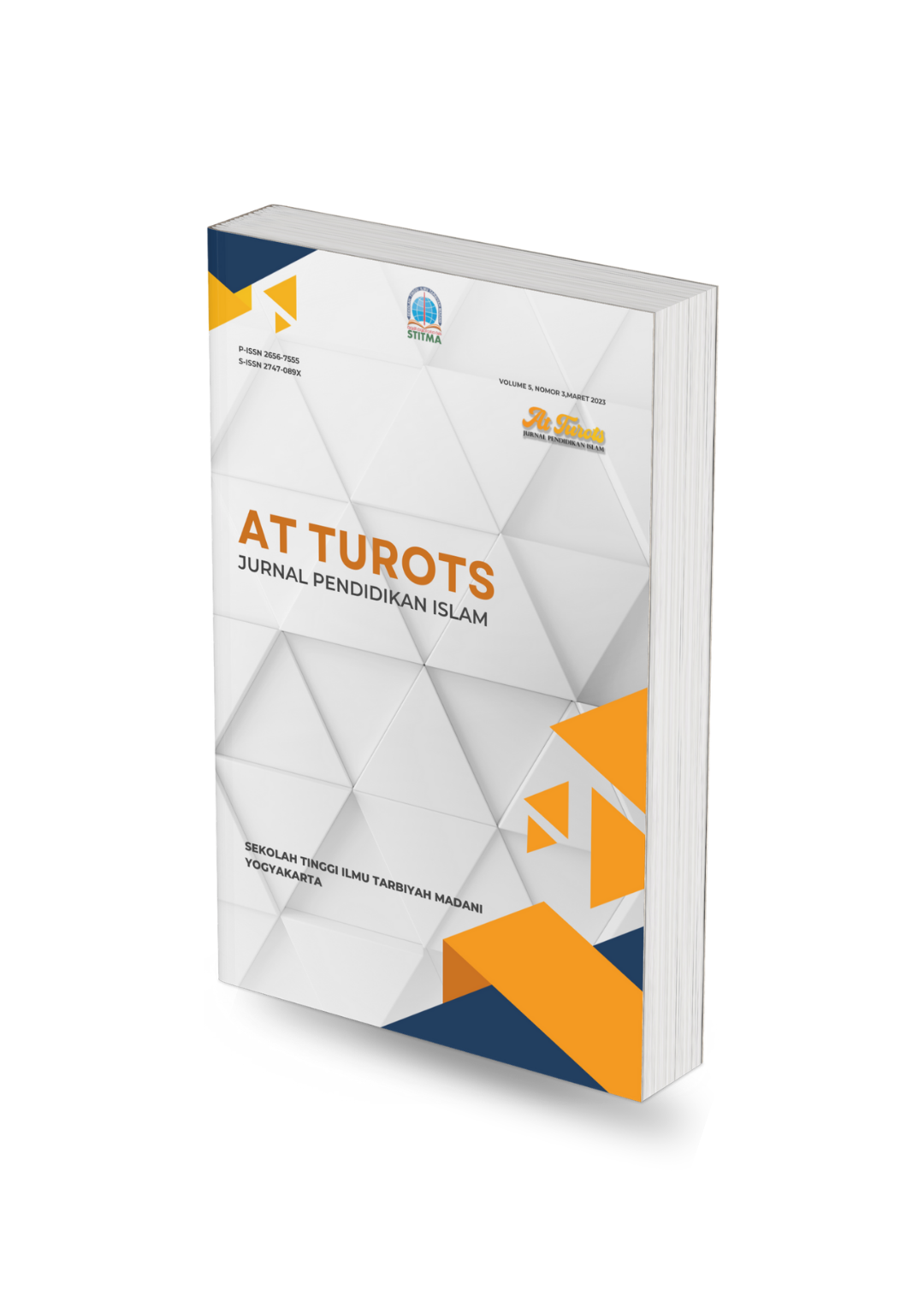Literacy house as a means of fostering the people: strategies for increasing islamic-based reading interest
DOI:
https://doi.org/10.51468/jpi.v6i2.751Keywords:
Literacy house; Strategy; Reading interest; 5P theory;Abstract
The background of this research is the low interest in reading the community, which is a challenge in building an Islamic literacy culture in the village. The purpose of the study is to find out the strategies that can be implemented, as well as to identify the supporting and inhibiting factors. The research method is qualitative with a phenomenological approach. Data were collected through interviews, observations, and documentation, and analysed using Miles, Huberman, Saldana's interactive model analysis techniques and applying Henry Mintzberg's 5P Theory. The results of the study show that the Sidoharjo Village Literacy House has succeeded in increasing people's interest in reading with a 5P theory-based strategy. Careful planning is well implemented. The tactics are carried out by Islamic fairy tale competitions, and social media campaigns. A pattern of reading habits that continues to be developed consistently. The strategic position of the Literacy House as a center for non-formal literacy and perspectives that respect local values also strengthens the attractiveness of the program, increasing citizen participation and ownership. Supporting factors include needs surveys and cooperation with local publishers, selection and procurement of structured reading materials, improvement of library facilities and interactive activities, evaluation and feedback collection. In addition, the inhibiting factors include a lack of awareness and limited knowledge about the benefits of reading, limited collections, lack of literacy education, budget limitations, and inadequate information technology infrastructure. The contribution of this research is to provide a model of a strategy for increasing reading interest that can be applied in other regions, as well as to recommend collaboration between the government, the community, and educational institutions to build a strong Islamic-based reading culture in the community.
References
Aminah, S., Pagarra, H., & Nurhaedah. (2023). Pengaruh Fasilitas Perpustakaan Sekolah Terhadap Minat Baca Siswa UPT SDN Sipala II Kecamatan Biringkanaya Kota Makassar. Pinisi Journal of Education, 3(1), 156–165. http://eprints.unm.ac.id/33644/
Fadillah, I. N., & Dini, K. (2021). Digital Storytelling Sebagai Strategi Baru Meningkatkan Minat Literasi Generasi Muda. Journal of Education Science, 7(2), 81–98. http://jurnal.uui.ac.id/index.php/jes/article/view/1566
Farrahatni, F., Fahri, M., & Hamdani, I. (2022). Upaya Guru Dalam Pemanfaatan Pojok Baca Untuk Menumbuhkan Minat Baca Siswa Pada Pembelajaran Bahasa Indonesia Di Kelas IV SD N Semanan 04 Pagi. Pendidikan Tambusai, 6, 10242–10249.
Gambrell, Li. B. (1996). Creating Classroom Cultures that Foster Reading Motivation. The Reading Teacher, 50(1), 14–25.
Kaharudin. (2018). Evaluasi Program Literasi Sekolah Pada Madrasah Tsanawiyah Binanga Negeri Kabupaten Mamuju. Educational Research and Evaluation, 53(9), 1689–1699.
Khasanah, I., Kolis, N., & Supriati, E. (2022). Meningkatkan Minat Baca Siswa melalui Perpustakaan di SMAN 1 Tegalombo Pacitan. Indonesian Journal of Academic Librarianship, 5(3), 17–25.
Kotler, P., Keller, K. L., & Chernev, A. (2021). Marketing Management (16th ed.). Pearson Education.
Laksmi. (2019). Modul 1: Pengembangan Koleksi. Pengembangan Koleksi, 1–49. https://www.pustaka.ut.ac.id/lib/wp-content/uploads/pdfmk/PUST4102-M1.pdf
Lankshear, C., & Knobel, M. (2006). New literacies: Everyday Practices and Classroom Learning. New Literacies: Everyday Practices and Classroom Learning, 7–28.
Magdalena Boga & Hj. Dety Mulyanti. (2022). Analisis pengembangan budaya literasi dalam meningkatkan minat membaca pada sekolah dasar yppk bomomani kecamatan mapia, kabupaten dogiyai, provinsi papua tengah. Jurnal Pemerintahan Daerah Di Indonesia, 14(3), 209–219.
McGeown, S. P., Duncan, L. G., Griffiths, Y. M., & Stothard, S. E. (2015). Exploring the relationship between adolescent’s reading skills, reading motivation and reading habits. Reading and Writing, 28(4), 545–569. https://doi.org/10.1007/s11145-014-9537-9
Miles, M. B., Huberman, A. M., & Saldana, J. (2014). Qualitative Data Analysis: A Methods Sourcebook. Third Edition. SAGE Publications Ltd (CA).
Mintzberg, H., Ahlstrand, B., & Lampel, J. (1998). Strategy Safari: A Guided Tour Through the Wilds of Strategic Management. Free Press.
Mirnawati, Baderiah, Tandi, F., Salmilah, & Firman. (2022). Strategi Guru dalam Mengembangkan Literasi Bahasa Indonesia pada Masa Pandemi di Sekolah Dasar. Jurnal Sinestesia, Vol.12(No.1), 165–177. https://www.sinestesia.pustaka.my.id/journal/article/view/166%0Ahttps://www.sinestesia.pustaka.my.id/index.php/journal/article/download/166/55
Nudin, B. (2020). Konsep Pendidikan Islam Pada Remaja di Era Disrupsi Dalam Mengatasi Krisis Moral. LITERASI (Jurnal Ilmu Pendidikan), 11(1), 63. https://doi.org/10.21927/literasi.2020.11(1).63-74
Porter, M. E. (1996). What is Strategy? Harvard Business Review, 74(6).
Prasida, E. P. S. E. (2022). Upaya Meningkatkan Minat Baca Dikalangan Remaja Desa Wirobiting Melalui Layanan Bimbingan Kelompok. Shine: Jurnal Bimbingan Dan Konseling, 2(2), 85–94. https://doi.org/10.36379/shine.v2i2.196
Rasinski, T. V, & Padak, N. (2003). Effective Reading Strategies: Teaching Children Who Find Reading Difficult (3rd ed.). Prentice Hall.
Sabirin Sabirin, Agus Hendrayady, & Jamhur Poti. (2023). Strategi Dinas Perpustakaan Dan Kearsipan Provinsi Kepulauan Riau Dalam Meningkatkan Minat Baca Masyarakat. Eksekusi : Jurnal Ilmu Hukum Dan Administrasi Negara, 1(3), 238–249. https://doi.org/10.55606/eksekusi.v1i3.531
Saputri, E., & Khairani, S. (2021). Peran Pemerintah dalam Meningkatkan Minat Baca melaui Pojok Baca Digital ( POCADI ) di Kota Lhokseumawe, Aceh. JIPKA: Jurnal Informasi, Perpusatakaan, Dan Kearsipan, Vol. 1(1), 27–39.
Schein, E. H. (2010). Organizational Culture and Leadership. In Edgar H. Schein: The Artistry of a Reflexive Organizational Scholar-Practitioner (4th ed.). Jossey-Bass.
Shrader, C. B., Taylor, L., & Dalton, D. R. (1984). Strategic Planning and Organizational Performance: A Critical Appraisal. Journal of Management, 10(2), 149–171. https://doi.org/10.1177/014920638401000202
Simbolon, M. E., Marini, A., & Nafiah, M. (2022). Pengaruh Literasi Digital terhadap Minat Baca Siswa. Jurnal Cakrawala Pendas, 8(2), 532–542. http://dx.doi.org/10.31949/jcp.v8i2.2449
Sudarto, Sabir, A., & Nurfadilah. (2022). Analisis strategi guru dalam meningkatkan minat baca siswa pada pembelajaran IPA. Inovasi Penelitian, 3(5), 6087–6092.
Syadila, F. (2021). Entertaiment Dunia Perpustakaan Di Era 4.0: Meningkatkan Minat Baca Dengan Menjadikan Perpustakaan Sebagai Tempat Atau Pusat Informasi Yang Menghibur. Jurnal Pustaka Budaya, 8(1), 61–72. https://doi.org/10.31849/pb.v8i1.4052
Triyono, A., Basori, M. H., & Suhariyanto, S. (2023). Optimalisasi Literasi Digital Bagi Anggota Pkk Desa Pabelan Dalam Mengatasi Informasi Dan Berita Hoak Di Internet. Jurnal Abdi Insani, 10(2), 795–802. https://doi.org/10.29303/abdiinsani.v10i2.943
Wati, T. (2022). Strategi Pengadaan Koleksi pada Dinas Perpustakaan dan Kearsipan Simeulue dalam Memenuhi Kebutuhan Informasi Masyarakat. Universitas Islam Negeri Ar-Raniry.
















